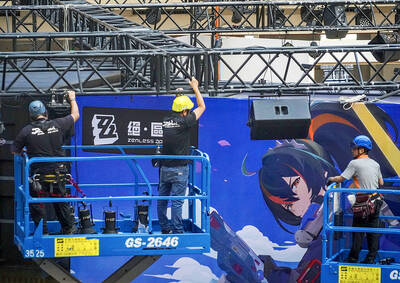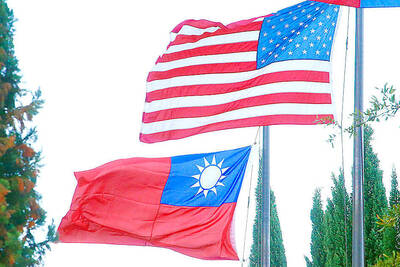Do you believe in love at first sight? Consider this: One look was about all it took when executives of Tata Motors, who in late 2007 were deciding whether to buy Jaguar from Ford Motor, saw sketches of what would become the 2011 XJ.
“What we had coming to market,” Gary Temple, president of Jaguar North America, said in a recent interview, “was what made them buy the company.”
Developed largely before Tata, of India, took over, the new XJ is a bold, mold-breaking styling statement. The old XJ’s long-running retro theme — traditional grille, quad headlamps, sculptured hood, low beltline and long tail — has finally been exorcized. While unmistakably a Jaguar, the new XJ is a thoroughly modern, flamboyant, unfettered expression of luxury.
Some loyalists feared that such a radical departure might alienate the typical Jaguar owner (known inside the company as the fictional “Mrs Schwartz on Long Island”).
But based on early sales figures, two things seem apparent. The Jaguar faithful (presumably including Mrs. Schwartz) are still happily on board. And the new car’s wow factor has smitten those who thought the XJ had become too old-school.
For more than 40 years, the XJ has been Jaguar’s flagship. When originally introduced in 1968, the company’s founder, Sir William Lyons, appeared in grainy television commercials extolling it as “the greatest Jaguar — ever!”
Indeed, while the original XJ was a landmark car — it has been called the most beautiful sedan ever — the XJ’s iconic status within the company has for decades cowed those who longed for a bold update. The previous three major redesigns hewed closely to the look of the original.
“We were almost afraid to mess with it,” Temple said. “There was a limit to how far we wanted to take the design; we didn’t want to lose the look we had nurtured for so long. But in doing that, to some degree, we will admit we lost our way.”
Well, then, welcome back.
“We are trying to bring the word ‘sleek’ back to Jaguar styling,” Ian Callum, the chief designer said. “It has not been easy.”
The new interior ranks among the most elegant in the auto industry, irrespective of price.
I slipped into the cabin of a top-line Supersport XJL, which is offered only by special order at a starting price of US$114,075; it was like being admitted to an exclusive English club.
The scent of glove-soft leather was intoxicating; the seats are a select “aniline” hide, with contrasting piping and embossed headrests. There is leather, leather and more leather — on the headliner, the door posts, the dash, the backs and sides of the seats, the console.
The cabin is rimmed with choice wood — materials other than wood, like carbon fiber, are available — forming what Callum calls the Riva line. It is meant to evoke the shape of a classic Riva Aquarama mahogany speedboat.
Outside, a tall shoulder — designers call it the “tornado line” — runs the length of the body. This subtle design element visually links the feline-inspired headlamps to “cat’s claw” taillights that sweep up from the bumper onto the top of the fender. The wheel arches bulge gracefully but muscularly from this line.
Even as the new XJ thumbs its nose at the old car, it does so while continuing to use many components carried over — in the interest of cost savings — from the midrange XF sedan and even the sporty XK coupe and convertible.
Jaguar lacks the development resources of larger competitors like Audi, BMW, Lexus or Mercedes-Benz. So Jaguar economizes by doing what custom coachbuilders did until World War II: Creating elegantly appointed new bodies for existing mechanical components.
The new XJ has basically the same running gear and chassis — with key refinements — as the car it replaces. This is far from an impediment. Jaguar’s distinctive all-aluminum chassis (another legacy of the Ford era) significantly reduces the car’s weight and gives it a performance advantage.
“One of the hidden facts that many people are not aware of,” Temple said, “is that we offer the only 500-horsepower car without a gas-guzzler tax.”
Supercharged versions, which start close to US$90,000, offer not only more power, but options like a proprietary Bowers & Wilkins audio system. The six-figure Supersports are exquisite, anointed throughout with cut-above materials and entertaining extras like indirect mood lighting.
These are the kinds of charismatic, idiosyncratic features that once gave a Jaguars a personality unmatched by anything else on the road.
As recently as 20 years ago, Jaguar would have ranked high on any list of products epitomizing British luxury. Then it seemed to lose the recipe. Before handing the brand over to Tata, however, Ford seems to have rediscovered the missing ingredients.

Taiwan is projected to lose a working-age population of about 6.67 million people in two waves of retirement in the coming years, as the nation confronts accelerating demographic decline and a shortage of younger workers to take their place, the Ministry of the Interior said. Taiwan experienced its largest baby boom between 1958 and 1966, when the population grew by 3.78 million, followed by a second surge of 2.89 million between 1976 and 1982, ministry data showed. In 2023, the first of those baby boom generations — those born in the late 1950s and early 1960s — began to enter retirement, triggering

ECONOMIC BOOST: Should the more than 23 million people eligible for the NT$10,000 handouts spend them the same way as in 2023, GDP could rise 0.5 percent, an official said Universal cash handouts of NT$10,000 (US$330) are to be disbursed late next month at the earliest — including to permanent residents and foreign residents married to Taiwanese — pending legislative approval, the Ministry of Finance said yesterday. The Executive Yuan yesterday approved the Special Act for Strengthening Economic, Social and National Security Resilience in Response to International Circumstances (因應國際情勢強化經濟社會及民生國安韌性特別條例). The NT$550 billion special budget includes NT$236 billion for the cash handouts, plus an additional NT$20 billion set aside as reserve funds, expected to be used to support industries. Handouts might begin one month after the bill is promulgated and would be completed within

NO CHANGE: The TRA makes clear that the US does not consider the status of Taiwan to have been determined by WWII-era documents, a former AIT deputy director said The American Institute in Taiwan’s (AIT) comments that World War-II era documents do not determine Taiwan’s political status accurately conveyed the US’ stance, the US Department of State said. An AIT spokesperson on Saturday said that a Chinese official mischaracterized World War II-era documents as stating that Taiwan was ceded to the China. The remarks from the US’ de facto embassy in Taiwan drew criticism from the Ma Ying-jeou Foundation, whose director said the comments put Taiwan in danger. The Chinese-language United Daily News yesterday reported that a US State Department spokesperson confirmed the AIT’s position. They added that the US would continue to

IMPORTANT BACKER: China seeks to expel US influence from the Indo-Pacific region and supplant Washington as the global leader, MAC Minister Chiu Chui-cheng said China is preparing for war to seize Taiwan, Mainland Affairs Council (MAC) Minister Chiu Chui-cheng (邱垂正) said in Washington on Friday, warning that Taiwan’s fall would trigger a regional “domino effect” endangering US security. In a speech titled “Maintaining the Peaceful and Stable Status Quo Across the Taiwan Strait is in Line with the Shared Interests of Taiwan and the United States,” Chiu said Taiwan’s strategic importance is “closely tied” to US interests. Geopolitically, Taiwan sits in a “core position” in the first island chain — an arc stretching from Japan, through Taiwan and the Philippines, to Borneo, which is shared by